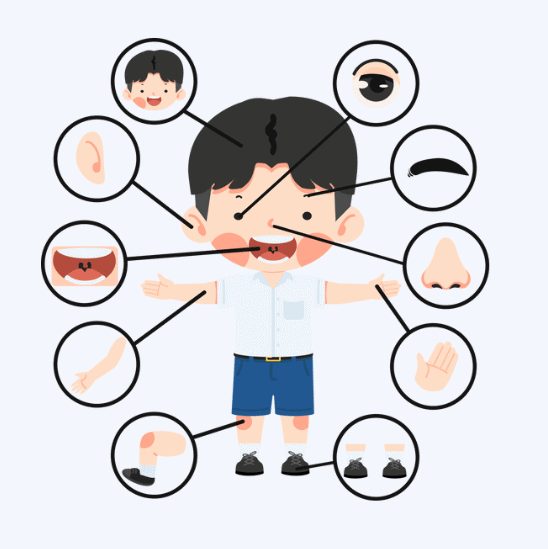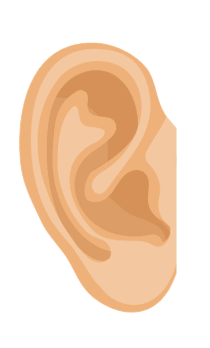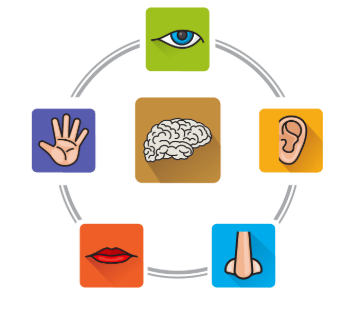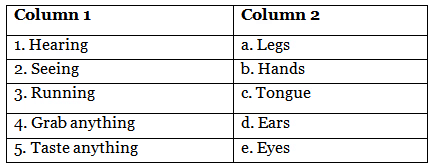Our Body - CBSE Worksheets- 2 Solutions
Name the following.
(i) A part of our body that helps us to feel
Ans: Skin
The skin is the largest sense organ and helps us sense touch, temperature, and pain.
(ii) A part of our body that helps us to walk
Ans: Legs
Our legs support our body and allow us to walk and move.

(iii) A part of our body that helps us to see
Ans: Eyes
The eyes are responsible for vision, enabling us to see the world around us.

(iv) A part of our body that helps us to hear
Ans: Ears
Ears are vital for hearing, helping us detect sounds in our environment.
 (v) A part of our body that helps us to eat
(v) A part of our body that helps us to eat
Ans: Mouth
The mouth allows us to chew food, speak, and perform various activities related to eating.
 Fill in the blanks
Fill in the blanks
(i) We have _______ sense organs.
Ans: We have five sense organs.
The five sense organs are sight, hearing, taste, smell, and touch.

(ii) We read books with our _______.
Ans: We read books with our eyes.
The eyes are used to read and interpret visual information.
(iii) We run with our ________.
Ans: We run with our legs.
Our legs allow us to walk, run, and move effectively.
(iv) We hear anything with our ________.
Ans: We hear anything with our ears.
The ears detect sound vibrations and help us hear.
(v) We taste the food with our ________.
Ans: We taste the food with our tongue.
The tongue helps in tasting different flavors of food.
 Name body parts used for the following tasks.
Name body parts used for the following tasks.
(i) Taste
(ii) Smell
(iii) Feel
(iv) Run
(v) Grab
Ans:
i) Taste
Ans: Tongue – The tongue is the sense organ responsible for tasting different flavors.
(ii) Smell
Ans: Nose – The nose is the organ used to detect and distinguish smells.
(iii) Feel
Ans: Skin – The skin allows us to feel sensations like touch, temperature, and pain.
(iv) Run
Ans: Legs – Our legs help us to run and support our movement.
(v) Grab
Ans: Hands – Hands are used for grabbing, holding, and manipulating objects.

Match the following.

1 – d
2 – e
3 – a
4 – b
5 – c
|
33 videos|215 docs|44 tests
|
FAQs on Our Body - CBSE Worksheets- 2 Solutions
| 1. What are the major organ systems in our body? |  |
| 2. How does the circulatory system work? |  |
| 3. What is the role of the respiratory system? |  |
| 4. How does the digestive system work? |  |
| 5. What is the function of the nervous system? |  |






















